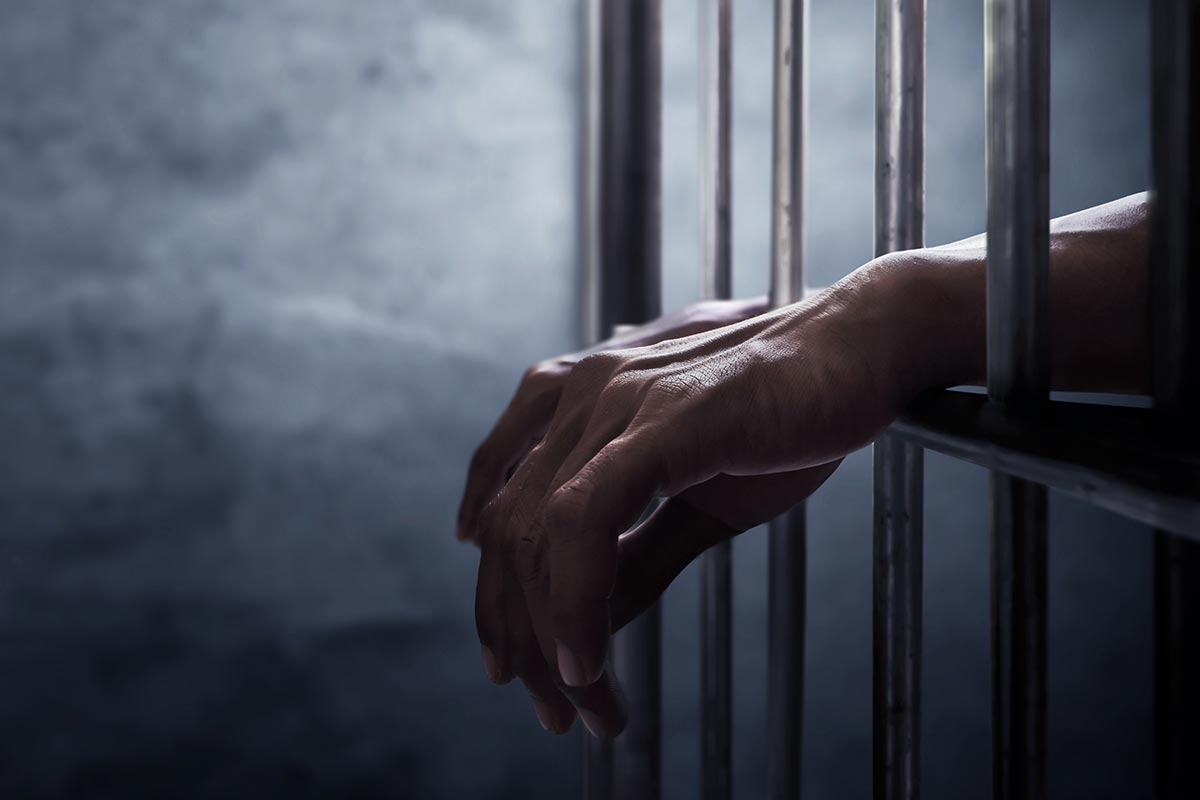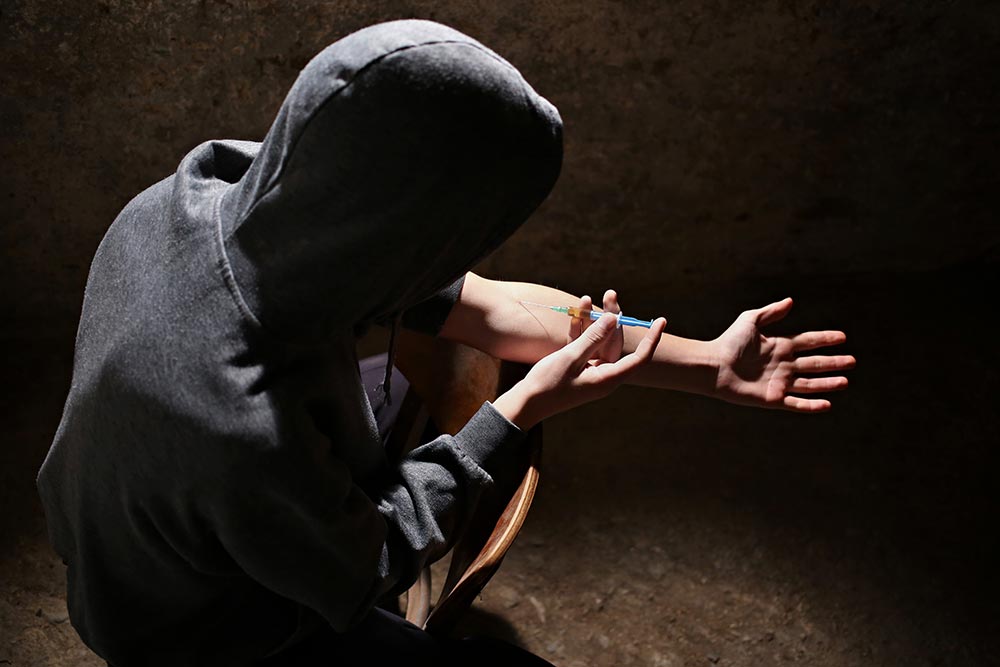Drug Use in US Prisons

Most people know that a large portion of the U.S. prison population is incarcerated for drug use, where they are presumably kept away from substances and forced to withdraw and recover from their addiction. Fewer people are aware of the extent of drug-related incarcerations (17% of all inmates in the United States are serving on drug-use or sale charges) or the prevalence of continued use behind prison bars.
In 2014, the United States actively took steps to reduce the number of addicts and users in prisons, making it easier to seek out rehab and treatment instead of a prison sentence and shortening many drug-related sentences. However, the vast majority of convicted drug addicts, those arrested while committing a crime, still receive traditional prison sentencing.
Drug Use is an Influential Factor in Crime
Studies show that drug and alcohol use and abuse dramatically affect crime, with the large majority of arrested criminals engaging in some form of substance abuse. In one study, it was shown that persons who were arrested where 47% likely to be under the influence of a substance, and in that study, which included blood tests of 200 arrested criminals – every one with a narcotic substance in their system had been arrested previously.
While the idea of the 'drug crazed criminal', where a person who takes drugs will go and commit a crime is a myth – it is also true that drugs increase reckless and selfish behavior, lowering inhibitions, and decreasing coordination and awareness of surroundings. Long-term drug users are more likely to commit crimes to get money for drugs, but also more likely to be caught.
This results in a naturally higher influx of drug users, who are both casual users and fully dependent, into the prison system, with most estimates showing that 80% of all prison inmates have used illicit substances at some point in their lives.
An Epidemic of Drug Use in Prisons
In February of 2010, a CASA report found that 65% of inmates met medical DSM-IV criteria for substance use disorder, yet only 11% ever received treatment. The study showed that many were incarcerated for committing felonies or other hard crimes, served prison time where drug use was not restricted, and then eventually released after serving their sentence only to commit crimes again. The study also found that offering treatment and aftercare to substance dependent individuals would pay off financially, lessening the number of incarcerated individuals in just one year if treatment had only a 10% rate of efficacy.
Availability of Drugs in Prisons
While drugs are tightly regulated, and often illegal and difficult to come by outside prison, many prisons experience a flourishing 'black market' of contraband ranging from food to cigarettes to drugs. This black market is often pushed by corrupt or lazy staff members, who either profit from it or who simply don't care. In one investigation by the Economist, an inmate was reported saying "Drugs are easier to get than soap".
Modern technology, including cell phones, drones, and computers, make it easier for inmates to connect with drug sources outside of prisons, and without the knowledge of staff. Drugs are so easy to get that in 2016, Michael Jones, a convict in high-security incarceration on death row in California, was able to obtain so much that he suffered an overdose. His case is not alone, with toxicology reports showing that 6 inmates in the San Quentin State Prison high-security ward died between 2010 and 2015, with high levels of opioids or amphetamines in their blood. This prevalence of usage is despite high security, cameras, frequent strip searches, and 30-minute interval checkups by guards.
An Environment that Encourages Addiction
Most American prisons are designed for punishment, offering little to do and few activities. Prisoners are often lonely, guilty, angry, and sometimes abused by their fellow inmates or the prison staff. Because many are also long-term drug users, all of these factors act as triggers for an addiction. For example, HALT (Hungry, Angry, Lonely, Tired), is an accepted series of triggers for addiction in recovering patients, and many inmates are frequently exposed to those and other stresses.
Many also suffer from extreme boredom, especially those who are not involved with prison work schemes or other activities. This results in drug and substance use simply to alleviate boredom.
Return to Communities after Release
With only 11% of inmates suffering from substance use disorder receiving treatment, the vast majority are eventually released back into their communities, where they most often continue to use and often commit new crimes. Inmates serving on drug-related crimes serve an average of 14 months, after which they are released back into the general population, without the tools to recover from or fight their substance abuse.
This results in a 12-fold increase in the risk of overdose in the first 2 weeks after release, as former inmates are given access to cheaply available (typically less than 10% of the cost of drugs in prison) substances, no security, and often very little or no prospects.
Alternatives to Incarceration for Drug-Related Crimes
While anyone who commits a felony will be sentenced to traditional incarceration, many courts now recommend drug-related arrests to drug courts. Here, the offender is reviewed by a caseworker or counselor, who determines if the person is addicted and if they could benefit from treatment rather than incarceration. If recommended to treatment, the person is typically given a mandatory 30-90-day rehabilitation, time in a halfway house, and must attend mandatory AA or other 12-step meetings.
In more severe cases, someone who commits a crime may be recommended to incarceration with addiction treatment. Here, sentencing can vary between attending treatment before incarceration to attending a specific treatment-related facility, depending on what is available and the severity of the crime.
Getting Help
If you or a loved one have been arrested for a drug-related crime, or are serving time for a drug-related offense, it is important to get help. If your loved one still has to go to court, discuss your options with your lawyer to determine if it will be possible to request drug rehab instead of prison time, or if treatment can be included as a mandatory part of incarceration. If your loved one is in prison and using, it may be crucial to get them into rehab for treatment as soon as they are released.
While the vast majority of inmates in prison have a history of substance use, and many use while incarcerated, they can get better. Treatment will teach mental skills to cope with cravings and triggers, give users motivation to get better, and help users through the worst of detox and withdrawal, so that they can go back to their life, and rebuild it drug and crime free.
You can talk to us about addiction treatment programs at our affordable drug and alcohol rehab that fit your needs, contact us today. The Anaheim Lighthouse is a modern and effective addiction treatment center in Southern California.














